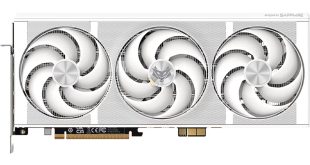Unigine provides an interesting way to test hardware. It can be easily adapted to various projects due to its elaborated software design and flexible toolset. A lot of their customers claim that they have never seen such extremely-effective code, which is so easy to understand.
Heaven Benchmark is a DirectX 11 GPU benchmark based on advanced Unigine engine from Unigine Corp. It reveals the enchanting magic of floating islands with a tiny village hidden in the cloudy skies. Interactive mode provides emerging experience of exploring the intricate world of steampunk.
Efficient and well-architected framework makes Unigine highly scalable:
- Multiple API (DirectX 9 / DirectX 10 / DirectX 11 / OpenGL) render
- Cross-platform: MS Windows (XP, Vista, Windows 7) / Linux
- Full support of 32bit and 64bit systems
- Multicore CPU support
- Little / big endian support (ready for game consoles)
- Powerful C++ API
- Comprehensive performance profiling system
- Flexible XML-based data structures
We use the following settings: 1920×1080 resolution. Anti Aliasing off. Anisotrophy 4, Tessellation normal. Shaders High. Stereo 3D disabled. API: Direct X 11.
We test at 1080p so that all video cards can be compared throughout our reviews. Obviously driver updates might enhance performance slightly over time, but as a rule, its a useful way for us to present the findings.
The Powercolor HD6850 Single Slot falls in line with a regular HD6850 at around 28 fps with these settings. It slots in between the Sapphire HD5850 Xtreme Edition and the AMD HD6870.
 KitGuru KitGuru.net – Tech News | Hardware News | Hardware Reviews | IOS | Mobile | Gaming | Graphics Cards
KitGuru KitGuru.net – Tech News | Hardware News | Hardware Reviews | IOS | Mobile | Gaming | Graphics Cards



Looks great. I like the fact many media system will suit this, and its more powerful than the usual single slot option
Nice looking card, very slim 😉
The noise figures are helpful, but I want to get two for a new crossfire based media center in a HTPC lian li chassis. will the noise be offputting? its hard to know.
Its a neat idea for a fairly high powered card, but in reality most people shouldnt touch it. they are better off with a dual slot design as they always run cooler and produce less noise. shame they didnt opt for a bigger fan which would spin slower.
Not for me, 6950 is in my plans for the future.
I opted for a 5670 passive card for my media system, it was enough for what I needed. this is a good option, but most people will want a silent or very quiet card for media. this isn’t it. good review